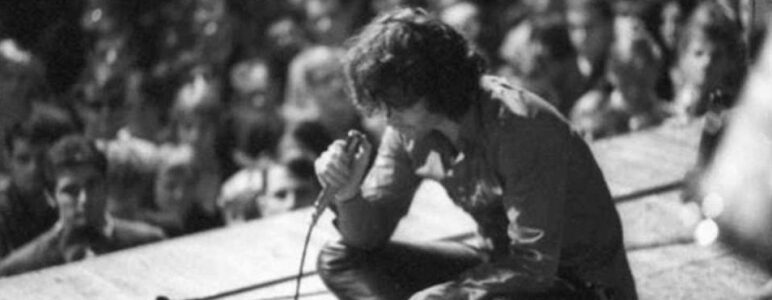In the annals of rock music history, certain songs stand out as iconic, timeless pieces that transcend generations. Among them is “The End” by The Doors, a hauntingly beautiful masterpiece that captivates listeners with its enigmatic lyrics and hypnotic melodies. In this comprehensive exploration, we delve into the depths of this legendary track, unraveling its meaning, examining its inspiration, dissecting its key themes, and tracing its evolution through various versions and covers.
Meaning Behind the Madness
“The End” is a lyrical labyrinth, shrouded in mystery and open to interpretation. Written by The Doors‘ enigmatic frontman, Jim Morrison, the song is a journey into the dark recesses of the human psyche. At its core, it grapples with themes of mortality, existential angst, and the duality of human nature. Morrison’s cryptic lyrics paint a vivid portrait of inner turmoil, inviting listeners to explore the depths of their own subconscious.
The opening lines, “This is the end, beautiful friend / This is the end, my only friend, the end,” serve as a stark proclamation of finality, setting the tone for the existential journey that unfolds. As the song progresses, Morrison weaves a tapestry of imagery and symbolism, drawing on themes of life, death, and rebirth. The repeated refrain, “The end of laughter and soft lies / The end of nights we tried to die,” echoes the transient nature of human existence, as fleeting moments give way to inevitable conclusions.
Inspiration and Creative Genesis
The genesis of “The End” can be traced back to Morrison’s experiences and influences. Drawing inspiration from the works of poets like William Blake and the writings of philosopher Friedrich Nietzsche, Morrison crafted a narrative that blurs the line between reality and illusion. The song’s brooding atmosphere and haunting imagery were also influenced by Morrison’s fascination with the darker aspects of human existence.
Morrison’s own tumultuous upbringing and complex relationship with his father also played a significant role in shaping the song’s themes and lyrics. The strained dynamics of familial bonds, coupled with Morrison’s own struggles with identity and self-expression, are palpable throughout “The End,” adding layers of emotional depth to its haunting melody.
Themes Explored in The End
At its core, “The End” grapples with a myriad of existential themes, each woven into the fabric of its enigmatic lyrics. The song serves as a meditation on the cyclical nature of life and death, as well as the complexities of human consciousness. Morrison’s exploration of the subconscious mind and its role in shaping our perceptions of reality reflects his own fascination with psychology and philosophy.
Themes of love, loss, and longing also permeate the song, adding layers of emotional depth to its haunting melody. Morrison’s evocative imagery and poetic lyricism evoke a sense of longing and nostalgia, as he reflects on past experiences and the passage of time. The juxtaposition of light and dark, life and death, further underscores the existential dichotomy at the heart of “The End,” inviting listeners to confront their own mortality and embrace the fleeting beauty of existence.
Version and Release History
“The End” first appeared on The Doors’ self-titled debut album, released in 1967. The album version of the song runs over 11 minutes long, featuring extended instrumental passages and Morrison’s hypnotic vocals. Over the years, “The End” has been remastered and reissued in various formats, solidifying its status as a classic rock staple.

Similar Tracks Worth Exploring
For fans of “The End,” there are several other tracks within The Doors’ discography that warrant exploration. Songs like “Riders on the Storm,” “When the Music’s Over,” and “The Crystal Ship” share thematic similarities with “The End,” offering listeners a glimpse into the band’s unparalleled creativity and musical depth.

Notable Cover Versions
“The End” has been covered by numerous artists across a wide range of genres, each offering their own unique interpretation of the classic track. Notable covers include versions by artists like Nico, Nirvana, and Marilyn Manson, each putting their own spin on Morrison’s haunting lyrics and haunting melody.
As you journey through the haunting melodies and enigmatic lyrics of “The End,” you’ll find yourself immersed in a world of introspection and existential inquiry. Join us as we unravel the mysteries of this timeless masterpiece and discover the enduring legacy of The Doors’ iconic track.

